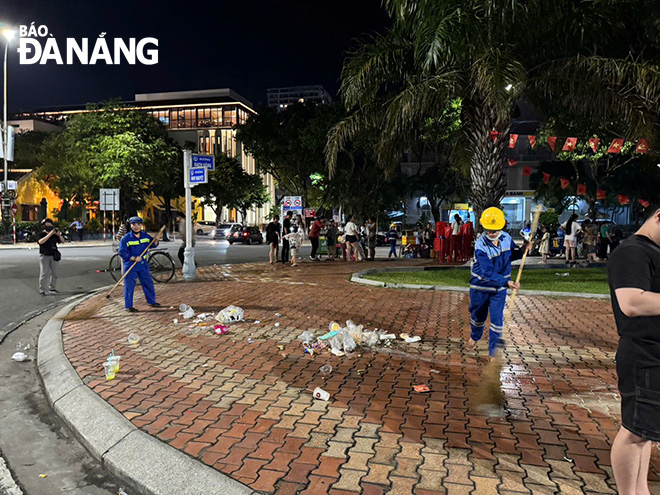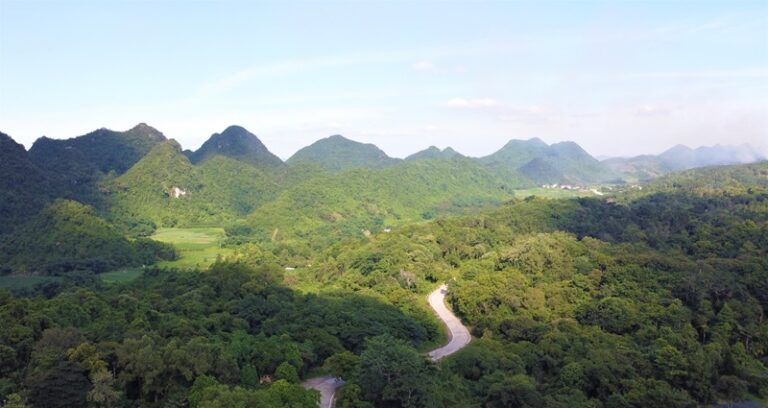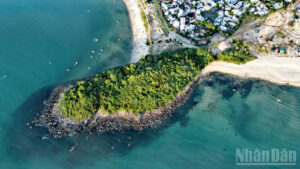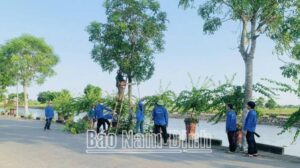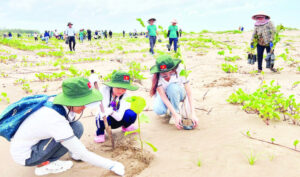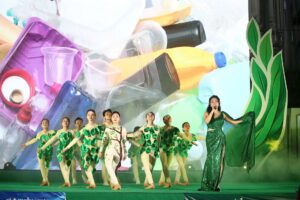Tay Bac, the mountainous region in the northwest of Vietnam, is famous for beautiful terraced fields, colorful love markets, magnificent mountains and valleys.
The terrain is fascinating for tourists who can discover many riddles of nature and indigenous cultures. The spectacular hillside-hugging road to the northern province of Ha Giang has a few hair-raising turns but the marvelous landscape is irresistible for nature lovers and adventurers.

I came to Meo Vac, a mountainous district in Ha Giang Province where tourists can visit Khau Vai love market, in the late afternoon. The topography is limestone mountains that impose over the poetic Nho Que river running through.
The love market often opens on the nights of 26th and 27th days of the lunar month. Shops trade till after midnight and local residents also stay up late. Their life rhythm is slow; the market is busy but I still sense a tranquility of there that is different to the markets in lowland regions.
In contrast, Meo Vac market in the morning is rather quiet with dozens of ethnic women standing around with wooden packs, filled with vegetables and other agricultural products on their back. Buyers take a look and handle the produce before they start to bargain. The market doesn’t stay open long.
Leaving Meo Vac, I continued the journey to conquer Ma Pi Leng Mountain. I have traveled through many Highland passes, but I felt a bit giddy at Ma Pi Leng, the king of all mountain passes in Vietnam.
Ma Pi Leng is located on the border of Ha Giang Township and Dong Van and Meo Vac districts. The road runs round the sides of black limestone mountains, which are typical features of Dong Van Plateau. Wall-like rocks of all shapes also beautify the pass between Dong Van Town and Lung Phin Commune. The Nho Que River adds the finishing touch to nature’s masterpiece.
In the dry season, ethnic people have to carry water large distances. I felt touched to see their hardship.
The next stop is conquering Lung Cu Mountain in Dong Van Plateau. It is in Lung Cu Commune, which is about 1,600 meters above sea level. On the peak of the mountain is a flagpole about 30 meters tall.
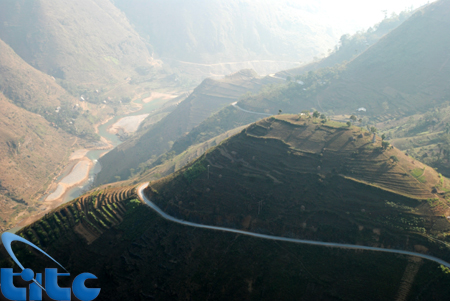
From the top, tourists can see the terraced fields and lakes below. It was breath-taking. I felt a sense of awe that I cannot forget.
Then I arrived at Dong Van District near sunset. Dong Van, about 155 kilometers from Ha Giang Commune, is the most developed district among the ethnic districts in Ha Giang.
Dong Van is famous with old quarters, old markets, especially with its name meaning a plateau of limestone. Dong Van’s old quarter is different from Hoi An ancient town as most of houses here are built the Chinese way with 60-80-centimeter-thick clay walls and tiled roofs.
The market days in Dong Van left the biggest impression on me. Groups of H’Mong, Dao, Tay and other ethnic peoples in their colorful costumes walk from every corner of the mountains to the market to buy and sell. They arrive on foot with oxen, pigs, horses, chicken and every type of livestock and fowl. It’s exciting to watch the noisy bargaining at the trading area for animals and the tinkling sounds of spoons, pots and bowls when food sellers prepare for the market.
The market is a place where the Kinh people can meet and exchange culture with minority peoples.


